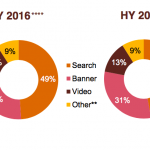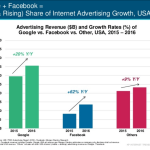Who will get credit for the revenue? How We consider Attribution
February 3, 2015

As a marketer, it’s important you remember how advertising and marketing campaigns build on every different to power gross sales and income. In advertising, “attribution” is the process of assigning credit to advertising and marketing campaigns for driving income.
Let’s dive a bit of deeper into the specifics of attribution:
- What are the different types of attribution?
- How does the Allocadia group take into consideration attribution?
- and how much attribution will have to you use at your group?
A sample consumer Story
Allison is in search of a new device solution for her group. So, she begins looking out.
- She does a Google search and sees an ad for easiest software Ever. She clicks the ad and reads some information on the most effective instrument Ever site.
- a few weeks later, Allison attends an adventure and learns more about very best instrument Ever at the firm’s exchange exhibit sales space and a personal dinner.
- When Allison returns from the experience, she learns about a finances freeze. All projects are put on hang. She retains receiving information from very best instrument Ever at regular intervals through an e-mail nurture campaign.
- Six months later, the funds freeze is lifted. Allison will get a well timed e-mail from best possible software Ever (the fifth one she’s obtained), and clicks to reply.
- Allison is put in touch with a highest device Ever gross sales rep. they have a telephone name. The sales rep closes the deal.
the 2 forms of Attribution
- Single-touch Attribution: if you’re the usage of single-contact attribution, most effective one advertising campaign gets credit for a sale. The marketing campaign that will get the credit score will be the primary touch (the Google advert — since it’s the touch that brought the lead within the door) or the closing contact (the email nurture campaign — because it’s the contact that led to a chance to get generated). Single-contact attribution is straightforward to put in force, low-value, and provides at least some initial perception into your marketing campaign influence. however, it doesn’t account for all of the touches that will have performed an element in serving to to pressure that revenue. And as you increase in sophistication, it’s essential to recognize that advertising and marketing takes a standard of seven touches to truly attain a potential buyer and it’s not so simple as saying that one factor led them to purchase.
- Multi-contact Attribution: in case you’re the use of multi-touch attribution, every campaign will get credit for the sale. Multi-contact attribution is principally useful for lengthy sales cycles with many touches. There are a number of totally different fashions. If every campaign gets equal credit, it’s equal multi-contact attribution. If each and every campaign gets variable credit score, it’s weighted multi-contact attribution. which you can used fastened weighting (as an example, the primary and last touches are weighted extra heavily and the rest of the attribution is divided amongst all the touches in the middle) or variable weighting. same old variables used in weighted multi-contact attribution embody the choice of contacts, contact sort, contact role, response status and time between touches.
what sort of Attribution should i exploit?
There’s no “proper” attribution variation. For any given group, one of the best attribution model is dependent upon the group’s maturity in measuring advertising efficiency.
Two thirds of firms use either no monitoring or general single attribution, consistent with a 2010 Lenskold group/eMedia study. The more subtle and complicated the attribution model, the more expensive it’s to achieve.
right here’s the path we counsel:
- if you’re just starting out, it’s simplest (and most cost-effective) to use single-contact attribution.
- in case you have some present approaches to trace which campaigns touch an opportunity, you can also need to consider equal multi-touch attribution. even if your attribution isn’t excellent, it’s going to provide you with a extra accurate view than you’d get from the usage of single-contact attribution.
- in case you have a neatly-based process to trace which campaigns contact an opportunity, with automated strategies, chances are you’ll want to use fixed weighted multi-touch attribution.
- if in case you have sufficient historic knowledge and can collect settlement on one of the crucial nuances inside the above adaptation, you could want to use variable weighted multi-contact.
some other option: Going Above Attribution
For some firms, it will make experience to try a special technique to attribution — what we name going “above attribution.” look at your efficiency in mixture on the subject of what was once spent and generated by the promoting group as a whole, or by using area or crew. In other phrases, you’d look at ROI now not from a bottoms-up, activity perspective, but from a top-down standpoint.
by going above attribution, firms can view marketing efficiency, spend and results in aggregate to get the next-stage view that’s helpful for the CMO.
Going above attribution is good for businesses that need to quick view efficiency without making the decision on particular campaign or task attribution.
Why Does Attribution subject within the giant picture?
Your CMO needs to understand what’s working from a advertising performance viewpoint. CMOs take a look at the promoting funnel to answer questions about which campaigns are working, which teams are performing and what’s providing the perfect ROI. Attribution helps advertising leaders make big-image selections about advertising strategy and spend.
To research more about attribution models, learn our submit about tactic attribution.
business & Finance Articles on business 2 group
(113)













